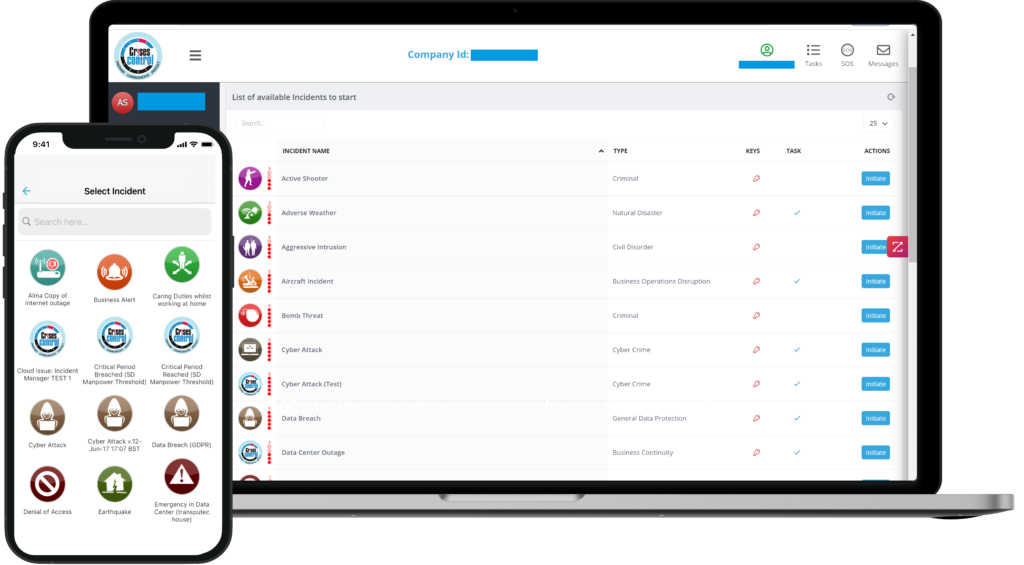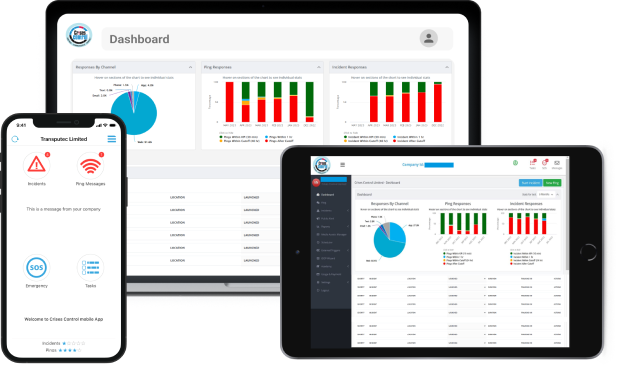Written by Anneri Fourie | Marketing Executive
As the aviation industry charts its path toward growth and operational excellence, safety and resilience remain critical priorities. Managing a large international airport involves complex challenges, such as ensuring passenger safety, minimising disruptions, and maintaining compliance with strict international standards.
Enter Incident Management Software, a transformative tool reshaping how aviation operations handle crises and complexities. This blog explores the critical role of incident management software in supporting global aviation hubs and ground handling teams, highlighting how Crises Control provides tailored solutions to meet the evolving needs of the aviation sector.
Global Aviation’s Ambition for Operational Excellence
Airports around the world, including leading international hubs, are vital to their respective countries’ economic and logistical growth. As the aviation industry continues to grow, these airports face unique challenges:
- Managing escalating passenger traffic and operations.
- Ensuring compliance with evolving international regulations.
- Handling emergencies efficiently while minimising downtime.
- Safeguarding stakeholder trust through effective communication.
To meet these demands, aviation operators need robust tools that can anticipate, manage, and resolve incidents effectively.
Transforming Aviation Operations with Incident Management Software
1. Elevating Safety and Compliance Standards
Safety underpins every successful aviation operation. However, the sector’s increasing complexity demands more than traditional manual processes. Incident Management Software provides:
- Real-Time Alerts: Immediate notifications for safety breaches or operational disruptions, ensuring quick action.
- Centralised Documentation: Comprehensive reporting for incidents, helping maintain compliance with aviation standards such as ICAO and IATA.
- Risk Identification: Proactive tools to identify potential threats, reducing the likelihood of accidents or delays.
With these features, aviation operators can stay ahead of challenges, safeguarding passengers and their reputation.
2. Optimising Communication Across the Ecosystem
Miscommunication during a crisis can escalate problems. Effective Incident Management Software ensures smooth communication through:
- Multi-Channel Notifications: Instant updates sent via SMS, email, voice calls, or push notifications to ensure every stakeholder is informed.
- Real-Time Coordination: Seamless collaboration between airport departments, airlines, and external partners to speed up decision-making.
- Passenger Updates: Automated alerts to inform passengers about flight delays, gate changes, or emergencies, enhancing customer experience.
By streamlining communication, these tools help aviation operators prevent confusion and foster trust among passengers and staff alike.
3. Improving Operational Efficiency
Delays and inefficiencies can ripple through an aviation hub, impacting schedules, revenues, and passenger satisfaction. Incident Management Software optimises operations by:
- Task Delegation: Assigning tasks to the right teams with clear timelines for resolution.
- Workflow Automation: Structured processes that reduce human error and speed up incident resolution.
- System Integration: Compatibility with existing airport management tools to create a unified operational system.
For global airports, these efficiencies translate into smoother operations, reduced costs, and happier travelers.
4. Supporting Sustainability Goals
As airports aim for environmentally sustainable growth, Incident Management Software contributes by:
- Reducing Paper Usage: Digital incident tracking and reporting eliminate the need for manual records.
- Energy Insights: Analytics that highlight areas for energy savings or resource optimisation.
- Minimising Waste: Tools to prevent operational disruptions that lead to wastage of time, energy, and materials.
By embracing digital solutions, the sector aligns with broader sustainability objectives.

Interested in our Incident Management Software?
Customise your Crisis Incident Management Software to meet your specific needs with our flexible tools & stay connected and informed during the crisis and incident management process
Why Global Aviation Needs a Business Continuity Platform
Resilience is non-negotiable in the aviation industry. A Business Continuity Platform, integrated within Incident Management Software, ensures:
- Rapid Recovery: Effective responses to disruptions like extreme weather, cyberattacks, or IT failures.
- Anywhere, Anytime Access: Cloud-based systems enable quick action regardless of location or time.
- Scalability: Designed to adapt to the growing needs of the aviation sector, ensuring long-term operational reliability.
By embedding continuity into everyday operations, aviation managers can safeguard their services against the unexpected.
Crises Control: Empowering Global Aviation Operations
At Crises Control, we understand the unique demands of high-stakes industries like aviation. Our Incident Management Software combines cutting-edge technology with practical features to support global aviation operators.
Our Key Features Include:
- Comprehensive Incident Management: Structured tools for reporting, task delegation, and resolution tracking.
- Advanced Mass Notifications: Multichannel alerts ensure no delay in delivering critical updates.
- Cloud-Based Resilience: Access critical data and systems anywhere, even during unforeseen challenges.
- Real-Time Analytics: Gain actionable insights from incidents to improve future operations.
- Seamless Integration: Designed to work effortlessly with your existing infrastructure.
A Case Study: Crises Control in Action
A leading ground handling company operating across nearly 200 locations worldwide faced significant challenges in managing communications during disruptions, including severe weather, security threats, and operational outages. With a global network spanning multiple languages, time zones, and data regulations, their complex operations demanded a reliable solution.
Crises Control transformed their response capabilities by enabling instant communication via SMS, calls, emails, and push notifications, while the SOS panic button and GPS tracking ensured rapid assistance for on-site or remote employees. Real-time dashboards provided a clear overview of tasks and incidents, allowing the team to act quickly, keep employees safe, and restore operations efficiently.
“Crises Control allows us to reliably update and send tasks to individuals throughout the event whilst allowing a centrally managed approach to recovery.” – Director of Operations
Read the full Case Study
Conclusion: Take Your Aviation Operations to New Heights with Crises Control
As the global aviation sector continues to lead in operational excellence, adopting tools like Incident Management Software is not just a choice, it’s a necessity. From enhancing safety and operational efficiency to promoting sustainability, these solutions are critical in building resilient aviation hubs worldwide.
Crises Control is here to help aviation operators enhance their incident management strategies with tailored solutions that address the unique challenges of the industry. Ready to see how our software can transform your operations? Contact us today for a free personalised demo and take the next step towards operational excellence.
Request a FREE Demo









